Digging at Fairmont
By Arlen Rienstra
Reprinted from "Crown Jewels of the Wire", September 2003, page 41
I initially became intrigued with KCGW insulators while at one of the last
insulator shows held in Columbia City, Indiana, May, 1991. There was a display
titled "Indiana Insulators" and there I closely observed KCGW
insulators for the first time. I was intrigued because I wasn't aware of any
other Indiana-produced insulators besides Hemingray. So, being a Hoosier and
always attracted to things out of the mainstream of collectibles, I was ready to
learn more about King City Glass Works and its products. I began to learn more
in bits and pieces from other collectors, but it wasn't until Bob Stahr
researched Sanborn maps and Dick Roller's "Indiana Glass Factories
Notes" to find the factory location, that I became very interested.
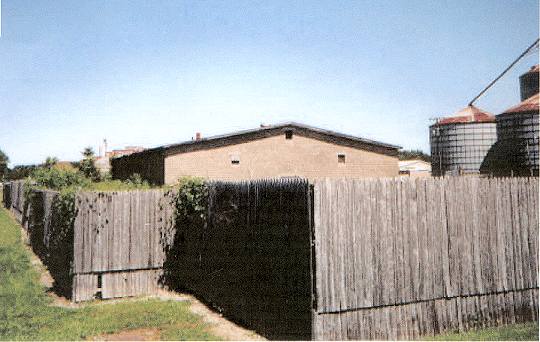
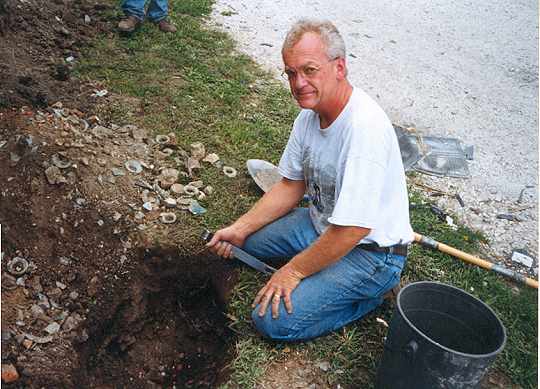
One
fall day approximately three years ago while traveling with Bob to visit the old
Hemingray factory site in Muncie, we stopped in Fairmount to see if the King
City Glass Works factory location shown on maps could be verified. We found the
location but instead of finding a factory building, we found an auto storage
yard for wrecked cars. There were remnants of old buildings but all were fenced
in and inaccessible. As we walked around the fence, we found shards of green and
aqua glass and cullet where the ground had been dug for postholes. I made a note
of the business name on the fence for future reference, hoping for an
opportunity to dig there.
The following spring, I contacted the owners of the
property and received permission to dig around the wrecked cars stored inside
the fenced area. The first dig was exciting! Bob, fellow Muncie-diggers Darin
Cochrin and Roger Lucas, and I joined forces. We made speculation holes in
several places but at first found mainly building and furnace bricks and sand (a
good start!) and Mason jar shards marked "The Marion Jar". Research
had indicated that King City Glass Works had been sold to The Marion Fruit Jar
and Bottle Company in 1897, so we were hopeful. It wasn't long before Darrin and
Bob each found shards of insulators (KCGW CD 120) and we knew we had found the
factory site for certain.
I returned many times after that (the others focused
on the Hemingray factory site in Muncie) and each exciting time I found more
shards of insulators, fruit jars, and catsup bottles (the site was also a Snider
catsup bottling plant after 1907). I dug other artifacts including fruit jar
blow tops, blow pipe "shells", furnace lining, glass worker's tools,
bottle and jar lids, gas jets and coal. While on the site, I sometimes referred
to Sanborn maps of the factory to determine where the tank furnace, annealing lehrs, grinding shop, mixing
shed, and warehouse had been located. There is not much of the property which
has not by now been investigated, except under a few wrecked vehicles which
never seem to get removed to be recycled and a large concrete slab area where
the main building of the Snider plant once stood (it was destroyed by fire mid
1940's). Most of the shards found are quite small, and I suspect that they were
part of the cullet pile near the mixing area of the factory. Evidence seems to
indicate that they were spread around and buried under an average of ten
inches of soil when an old railroad siding spur at the loading dock was removed
or when the property was leveled.
Most recently I have focused on sorting the
artifacts that I have collected. By carefully examining shape, color and
embossing (or blotted-out embossings) I have been able to authenticate many KCGW
and KCGCo styles and some that were suspected, but never before proven to be
KCGW-produced. At this point in my research, it appears the following CD's were
produced there: 102.3, 106, 120, 124, 133.3, 134, 145, 151, 160, 162, 163.2, 164, and
1104. Colors range from ice blue to ice green, green aqua to dark aqua, and
even some near clear and celery green. There is more to be discovered and some
questions still unanswered. One major unknown is the exact location of the
factory that produced the KCGCo. CD 164 insulator that has the word
"PERU" on the rear skirt.
Only blot out embossings of that insulator
have been dug in Fairmount. It is possible that embossed ones were produced in
nearby Peru, Indiana. Another mystery is why there are so many
"blot-out" styles. Is it possible that Marion Fruit Jar and Bottle Co.
continued to produce insulators after they purchased the factory from KCGW's
owners and blotted out the KCGW name?
King City Glass Works was established in
1890 and sold in 1897. It was listed in a business directory around that period
as being a producer of electrical supplies, insulators and battery jars. I
have found no evidence of anything other than insulators produced by KCGW either
by exploration at the factory site or in collecting and researching KCGW
insulators. No advertisements or factory photos have been located. But contacts
have been made with living relatives of one of the founders and much personal
history of both owners has been assembled, including photographs; material for
another article, another time.
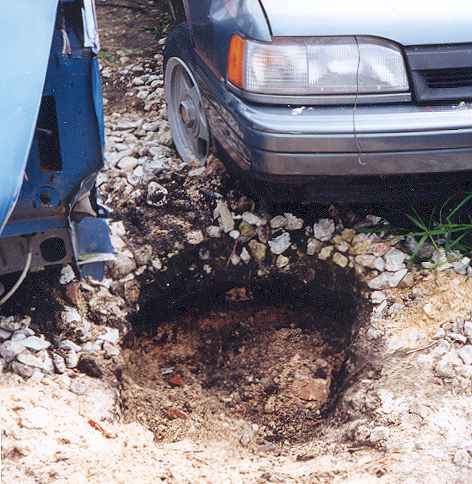
One of Arlen's "speculation" holes, working around junk
cars stored on the property nowadays.
Site Photos by Bob Stahr
(Editor's Note: Crown Jewels will publish Arlen's article on historical
information regarding the King City Glass Works in the October issue.)
|
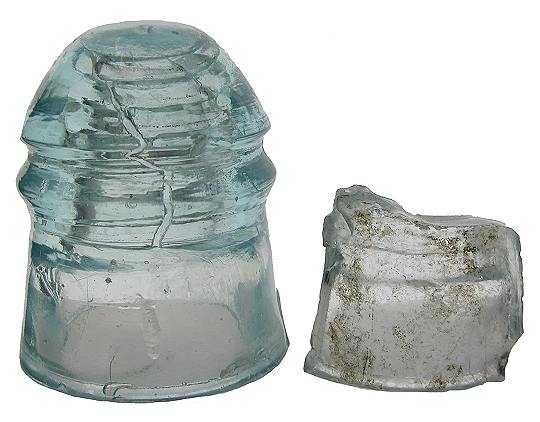
102.3 No Name-KCGW
Vertical bar shard
|
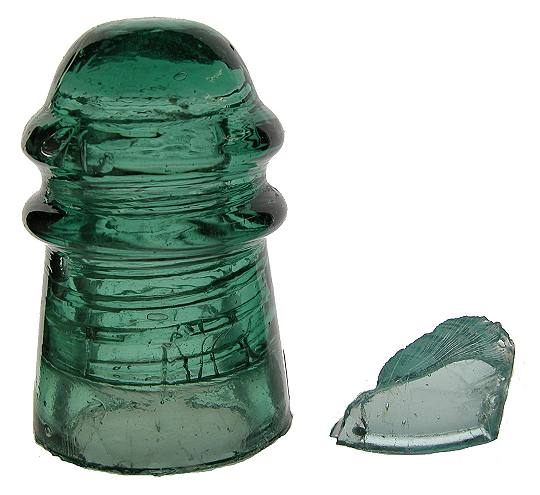
106 No Name-KCGW
Skirt shard
|
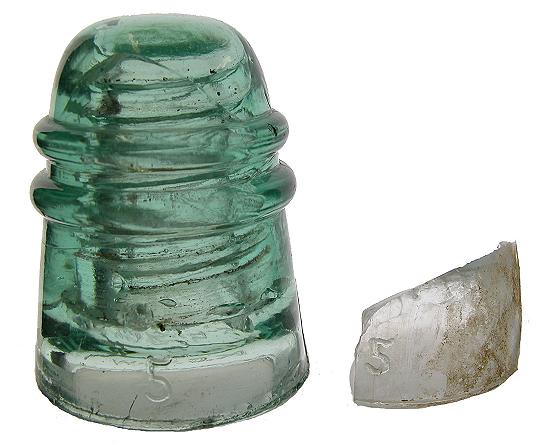
120 KCGW-back
Rear number shard
|
|
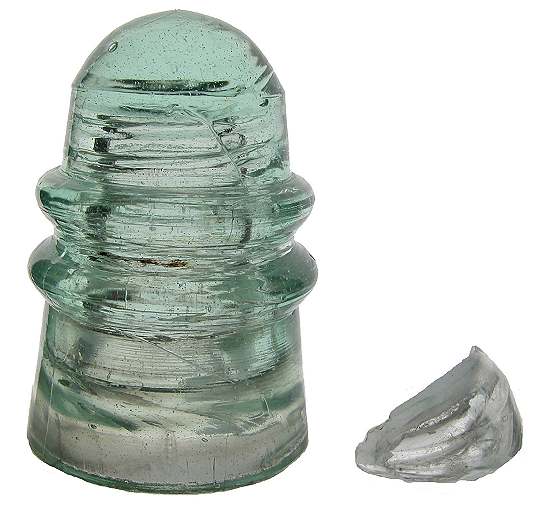
124 No Name-KCGW
Dome fragment
|
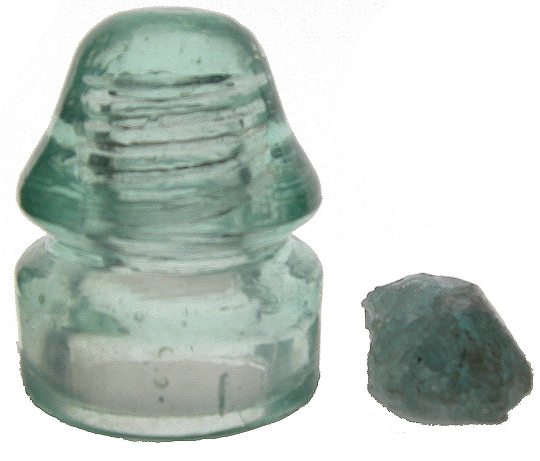
133.3 No Name-KCGW
Vertical bar shard
|
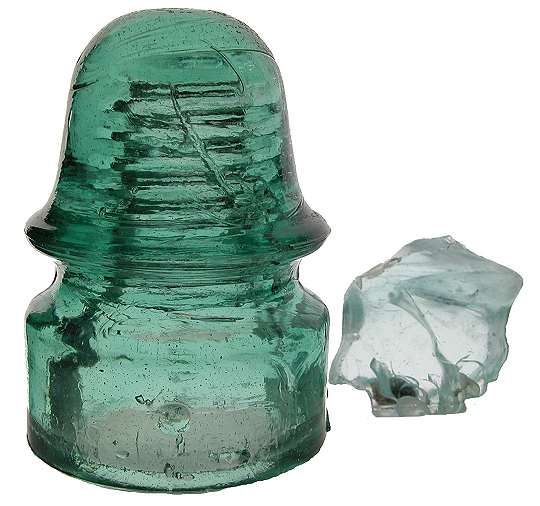
134 KCGW
KCGW Blot-out 134 dot shard
|
|
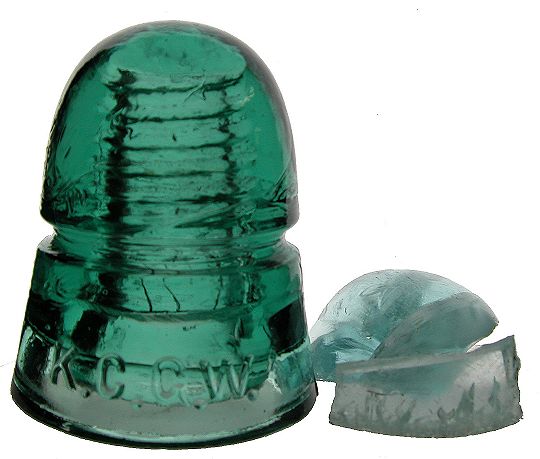
145 KCGW
Skirt shard w/letters & Dome fragment
|
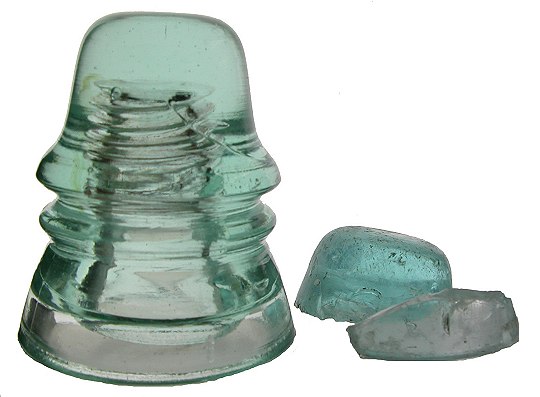
151 No Name-KCGW
Vertical bar shard & Dome
|
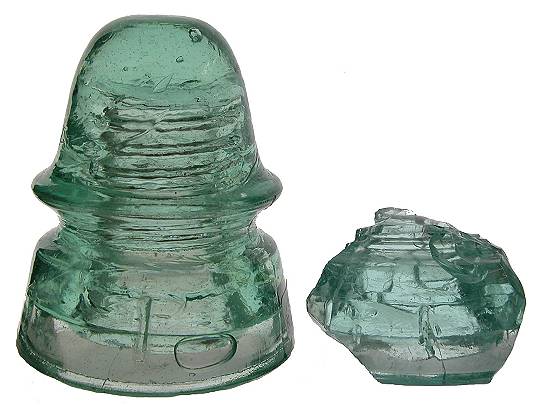
160 No Name-KCGW
Vertical bar shard
|
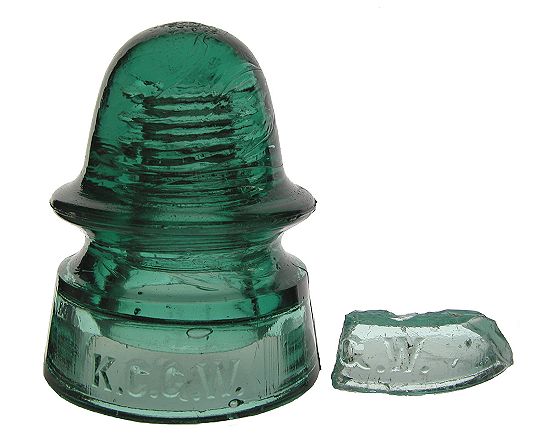
162 KCGW
Skirt shard w/letters
|
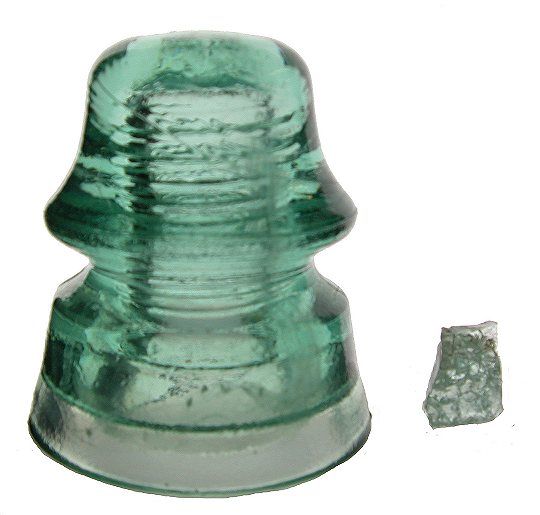
163.2 No Name-KCGW
skirt fragment
|
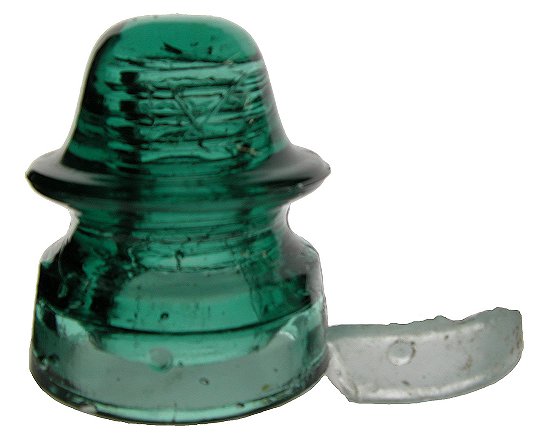
164 No Name-KCGW
KCGCo Blot-out 164 dot shard
|
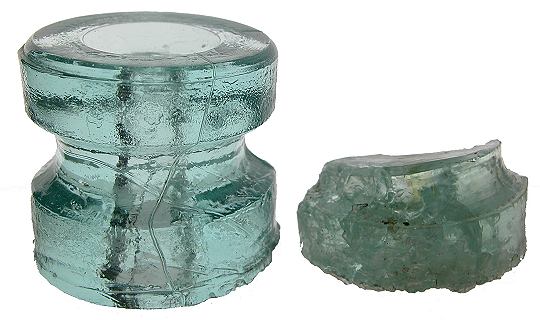
1105 No Emb-KCGW
base fragment |
MATCHING SHARDS TO CD'S
Produced by King City Glass Works
Photos by Carol McDougald
|
|
